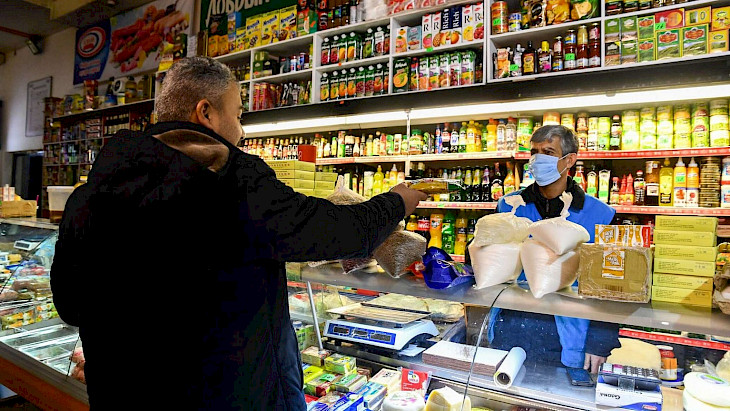The stability of Tajikistan's national currency is exerting a restraining influence on price growth in the country, according to economists from the Eurasian Development Bank, Asia Plus reports.
The bank notes that since March 2003, the local currency's exchange rate to the dollar has remained at the level of 10.95-10.96 somoni per one US dollar.
"Inflationary pressure from imports also remains moderate due to stability in quotes on international energy markets and their decline in food markets," the EDB's macroeconomic overview states.
The Bank's publication highlights that the annual inflation rate in Tajikistan slowed to 3.6% in February 2024 from 3.8% the previous month.
According to the National Bank of Tajikistan, the inflation rate in February decreased to 0.3% from 0.4% in the first month of 2024.
The increase in prices in February of this year, according to the specialists of the National Bank, is primarily explained by the rise in the cost of food products by 0.5%. The cost of paid services to the population increased by 0.2%, and non-food items increased by 0.1%.
According to analysts of the regulator, seasonal factors and an increase in demand for basic goods and products influenced the price level.
In Tajikistan, according to official statistics, low inflation was recorded over the past two years - 4.2% and 3.8%, respectively. The lowest inflation rate in the 32 years of the country's independence was recorded only in 2013 (3.7%).
The National Bank of Tajikistan previously explained the reasons for low inflation over the past two years by the influence of "seasonal factors, the collection of a rich harvest of some agricultural products, and stabilization of import prices."
The target inflation rate of the National Bank in recent years, as well as in the current year, is within 6.0% (±2 percentage points), that is, from 4.0% to 8.0%.
Usually, central banks of countries with market economies prefer to maintain inflation at a level of 5-6% per year (low or creeping inflation). This level is considered by economists as ideal for the further development of the country, as too low inflation, let alone deflation (price decrease), is more dangerous than high price growth.
CentralasianLIGHT.org
March 22, 2024

